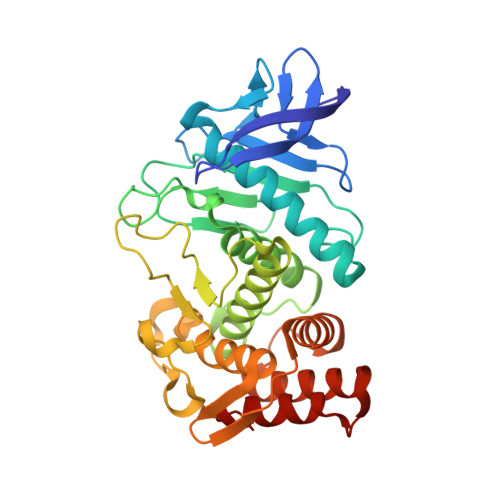Experimental and computational mapping of the binding surface of a crystalline protein.
English, A.C., Groom, C.R., Hubbard, R.E.(2001) Protein Eng 14: 47-59
- PubMed: 11287678
- DOI: https://doi.org/10.1093/protein/14.1.47
- Primary Citation of Related Structures:
1FJ3, 1FJO, 1FJQ, 1FJT, 1FJU, 1FJV, 1FJW - PubMed Abstract:
Multiple Solvent Crystal Structures (MSCS) is a crystallographic technique to identify energetically favorable positions and orientations of small organic molecules on the surface of proteins. We determined the high-resolution crystal structures of thermolysin (TLN), generated from crystals soaked in 50--70% acetone, 50--80% acetonitrile and 50 mM phenol. The structures of the protein in the aqueous-organic mixtures are essentially the same as the native enzyme and a number of solvent interaction sites were identified. The distribution of probe molecules shows clusters in the main specificity pocket of the active site and a buried subsite. Within the active site, we compared the experimentally determined solvent positions with predictions from two computational functional group mapping techniques, GRID and Multiple Copy Simultaneous Search (MCSS). The experimentally determined small molecule positions are consistent with the structures of known protein--ligand complexes of TLN.
Organizational Affiliation:
Structural Biology Laboratory, Department of Chemistry, University of York, Heslington, York YO10 5DD, UK.


















